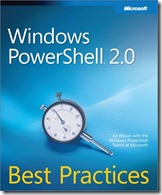![cat[1] cat[1]](http://lh4.ggpht.com/_SVlKer2O_7A/TQbvQtgnM5I/AAAAAAAAGUg/2QmBVkkZ63k/cat%5B1%5D%5B12%5D.gif?imgmax=800) Overall, Windows Phone 7 Plain & Simple is a good book for people new to Windows Phone 7 and especially for people new to Smart Phones. Michael does a great job illustrating how to use the phone and get up to speed quickly. He walks quickly through the general operation, setting up the phone, and entering text in the first couple chapters. The next several chapters discuss using the most popular features of WP7: calling, e-mail, text messages, calendar, browsing the web, and using the maps/navigation. Next we learn more about music, video, taking pictures and videos, and using the Marketplace. We end with a quick session on using WP7's Office Hub for documents, spreadsheets, and OneNote. This is followed by a discussion on using the Zune software to synchronize files between your phone and your PC. (Michael doesn't mention the Mac software to do this. It's capable, but more limited.)
Overall, Windows Phone 7 Plain & Simple is a good book for people new to Windows Phone 7 and especially for people new to Smart Phones. Michael does a great job illustrating how to use the phone and get up to speed quickly. He walks quickly through the general operation, setting up the phone, and entering text in the first couple chapters. The next several chapters discuss using the most popular features of WP7: calling, e-mail, text messages, calendar, browsing the web, and using the maps/navigation. Next we learn more about music, video, taking pictures and videos, and using the Marketplace. We end with a quick session on using WP7's Office Hub for documents, spreadsheets, and OneNote. This is followed by a discussion on using the Zune software to synchronize files between your phone and your PC. (Michael doesn't mention the Mac software to do this. It's capable, but more limited.)
Having followed the progress of WP7, I found that I knew a lot of the information in this book. There were still a couple interesting bits of information that were news to me, but not many. Michael didn’t write this for people like me who have followed WP7 for some time. He wrote for people who aren’t really familiar with smartphones and especially with the changes that WP7 brings. For those people, this will be a useful read and a quick reference while they get used to their device. I plan to show this to my family members who have WP7 devices and aren't quite sure what to do with them.
The positives:
- The information is very well presented, easy to follow, and broken out into logical sections.
- Michael's casual writing is well-suited for this book.
- Readers will not feel intimidated by their new phone and are encouraged to try things out.
- Michael presents some information that you may not easily find by reading articles online.
The negatives:
- I don't see this as a book that will be a long-lasting reference book. Once the reader has used the phone for a month or so, the lessons from this book should be second-nature.
- WP7 already has two planned updates at the time of this review. A minor update in January 2011 that will reportedly enable Copy/Paste functionality and a larger one in February 2011. The errata for this book will need to be updated to take these changes into account as some information may be outdated.
Conclusion:
If you can find Windows Phone 7 Plain & Simple for a reasonable price and are new to the platform, pick it up. It's a short, but informative, read. If you've followed WP7 for a while, this is not likely the book for you as you'll know most of the information here already. You may still want to pick up a copy to share with family or friends who are new to the phone. It could save you "support" calls.
Please visit the Windows Phone 7 Plain & Simple page at O’Reilly for more information about this book.
Disclaimer: I received a free copy of this book in electronic format in return for providing an honest review. I was not compensated in any other way.
